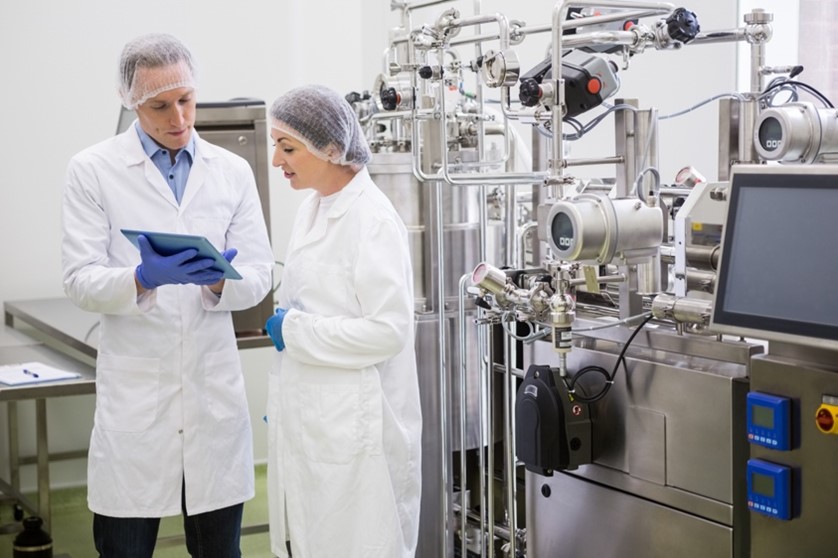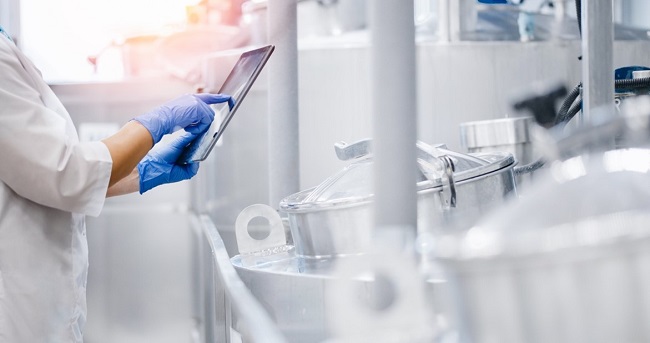Training at Seepex: Protecting use cases in the pump industry with IP-design
Ensuring Food Safety: The Crucial Technical Aspects
Food safety is a paramount concern in today’s world, where the global food supply chain is becoming increasingly complex. To guarantee the safety of the food we consume, various technical aspects play a crucial role. From production to distribution, these aspects are vital in safeguarding public health and preventing foodborne illnesses.

Feedback by Dr. Christian Hansen, Managing Director & Group CTO at Seepex after the training:
“Your training in April 2023 and the discussions with you have once again given us at Seepex many new insights into the (as we have learned) dramatically growing importance of digital patent applications. The value of the event for our company and our digital solutions can be seen in two ways:
On the one hand, there is the question of how we as a company have to position ourselves in the area of our own digital developments and generated IP in order to generate inventions with extremely broad economic value that are not only technology-driven, but also systematically and procedurally supported top-down from the digital business model.
And on the other hand, there is the question of FTO and the special risks that arise due to the surprisingly strong increase in the area of digital patents (at use case level), which often threaten the success of our own developments unnoticed by us.
I can say that your training was an “eye opener” for many of the participating developers and product managers and created the necessary awareness. It became more than clear that we need to integrate the aspect of digital patents much more closely into our development processes in both respects.”
HACCP is a systematic approach that identifies potential hazards and establishes control points in the food production process. By monitoring and controlling these critical points, the risk of contamination is minimized. This approach helps food producers pinpoint areas of concern and implement corrective measures in real-time.
Proper temperature control is fundamental for food safety. Inadequate cooking, improper storage, or temperature fluctuations during transportation can lead to bacterial growth and spoilage. Technical tools like temperature sensors and monitoring systems are essential in maintaining the integrity of the cooling chain and ensuring food remains safe for consumption.
The choice of food packaging materials and techniques directly affects food safety. Barrier packaging, vacuum-sealing, and modified atmosphere packaging can extend shelf life and reduce the risk of contamination. Moreover, the development of smart packaging with sensors to detect spoilage gases or microbial growth adds an extra layer of safety.
Traceability systems using barcodes, RFID tags, or blockchain technology help track the journey of food products from farm to table. In case of a safety issue or contamination, this technology enables quick and precise identification of the affected products, facilitating efficient recalls and minimizing health risks.
Adherence to international quality standards such as ISO 22000 is vital. Quality control measures include laboratory testing, quality audits, and adherence to good manufacturing practices (GMP). These technical aspects ensure that food products meet the necessary safety standards.
Irradiation and pasteurization are food processing techniques that use heat or radiation to kill pathogens and extend the shelf life of food. They help eliminate harmful microorganisms while preserving the nutritional value and taste of the food.
FSMS such as the ISO 22000 standard provide a framework for managing food safety risks. By incorporating hazard analysis, risk assessment, and effective control measures, these systems help food businesses maintain the highest safety standards throughout their operations.
Proper hygiene practices are critical to food safety and this requires also a high level of quality in the machines processing the food, including pumps. Sanitization of equipment, surfaces, and hands is essential to prevent the spread of pathogens. Technical innovations like automated cleaning systems and advanced disinfectants aid in maintaining hygienic conditions.
Advanced data analytics and artificial intelligence are increasingly being used to predict and prevent food safety issues. These tools can analyze vast amounts of data to identify potential risks, helping food producers take preemptive measures.
Effective supply chain management is vital to ensure food safety. Real-time monitoring, GPS tracking, and blockchain technology can be employed to oversee the flow of products from farm to consumer, helping to detect and mitigate potential hazards.
In conclusion, food safety is a complex and multifaceted issue that relies heavily on technical aspects throughout the food production and distribution process. By embracing technology and adhering to rigorous safety standards, the food industry can better protect consumers from the risks of foodborne illnesses and contamination. Ultimately, the integration of these technical aspects into food safety practices is a fundamental step toward a safer and healthier global food supply chain.
 About Seepex
About Seepex
SEEPEX is a leading worldwide specialist in pump technology for many specialized industries including the food & beverage industry. Since 2021, SEEPEX has been part of the Ingersoll Rand Group, a global supplier of mission-critical flow creation and industrial solutions, consisting of more than 40 renowned brands. SEEPEX progressive cavity pumps, pump systems and digital solutions are used wherever low to highly viscous, aggressive or abrasive media must be conveyed at low pulsation rates.
SEEPEX pumps operate reliably and with minimal maintenance work. In addition, the company offers various services for the pumps that ensure long-term value, guarantee optimal operation and minimize life cycle costs.
The company provides comprehensive consulting for the pump’s entire service life and effective support in all stages of the pump’s service life. They supply high-quality SEEPEX original parts and guarantee short delivery times, as well as a 24-hour helpline support. SEEPEX services are available in over 70 countries. How to protect such digital services and customer benefits with IP-design was also the topic of a training by Prof. Alexander Wurzer at Seepex on 18.04.2023.
The main benefits of a Seepex pump system:
- Decreased life cycle costs
- Long-term value preservation
- Sustainable quality assurance
- Lower follow-up costs for maintenance and repairs
- Increased profitability and efficiency
The Right Solution for Every Beverage
From beer to malt drinks and non-alcoholic beer to spirits: The brewing and spirits industry offers its customers a wide range of products. Whether with or without alcohol or the production of millions of hectoliters down to a few thousand liters a year – the taste should always be consistent, unmistakable and of outstanding quality.
At the same time, brewmasters and distillers have to keep an eye on factors such as operating costs, efficiency, process stability as well as plant availability and productivity – in short: the most economical production possible with the highest possible quality.
Raw product quality can only be maintained through extremely hygienic conveyance with the shear forces reduced to a minimum. In addition, additives such as yeast or flavors must be precisely metered and added at low pulsation rates. SEEPEX pumps from the CS and D range are primarily used for this purpose.
Pumps of the N and T range, which convey rejected yeast for recovery, and the Smart Air Injection (SAI) system solution, which efficiently conveys hop and malt spent grains by means of controlled compressed air injections, ensure the most economical production possible. The intelligent pump technology therefore consumes only a fraction of the compressed air that would otherwise be required, saving up to 80% on energy costs.
They also have the right solution when it comes to maintenance. The Smart Conveying Technology speeds up the replacement of rotor and stator during maintenance by up to 85% – for an increase in production thanks to shorter downtimes.
SEEPEX at a glance:



